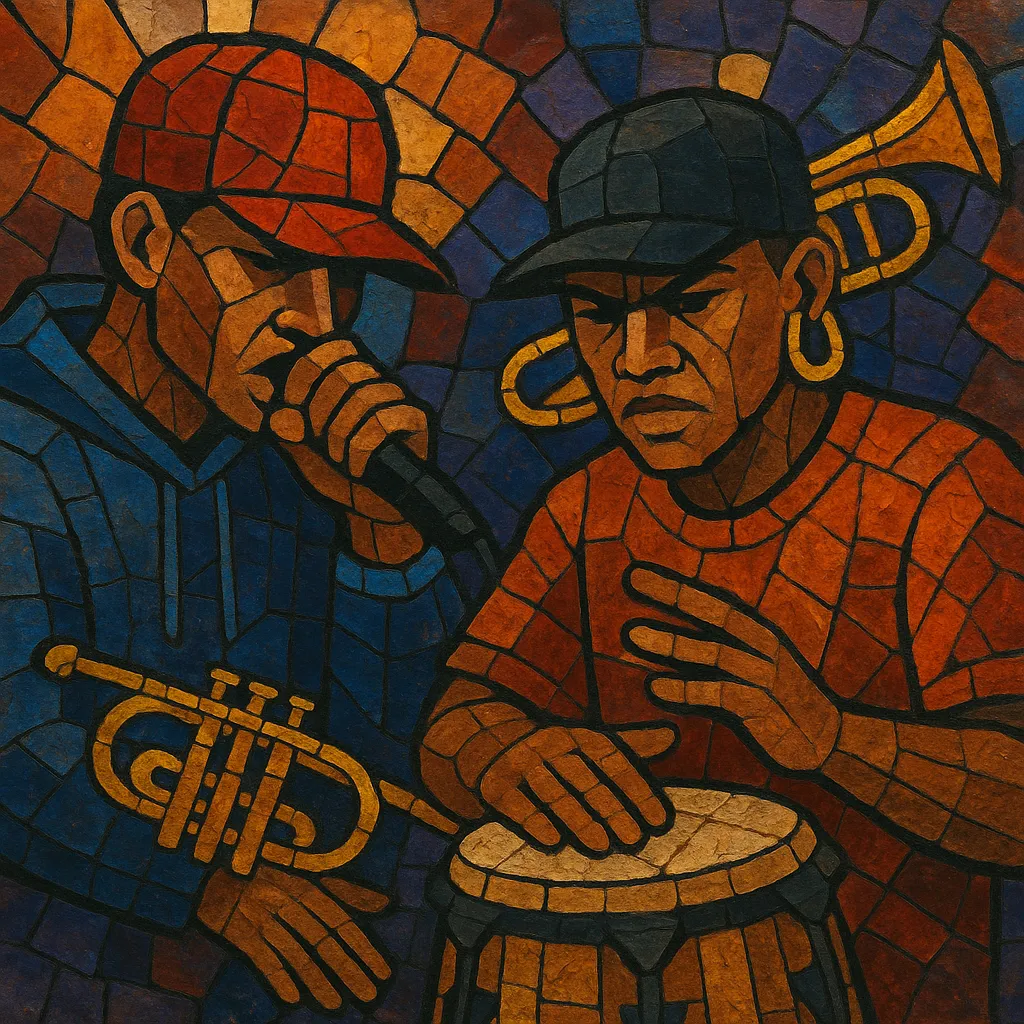
Latin hip hop is a stylistic umbrella for hip hop created by Latino/Latinx artists in the United States and across the Spanish- and Portuguese-speaking Americas.
It blends core hip hop elements—rapping, DJing, sampling, and beat-making—with rhythmic vocabularies, percussion, and melodic idioms from salsa, boogaloo, merengue, cumbia, Latin jazz, and other pan‑Latin traditions.
Bilingual or code‑switching lyrics (Spanish/English, sometimes Spanglish) are common, as are narratives tied to migration, barrio life, identity, social justice, and celebration.
Musically it spans from boom‑bap and G‑funk inflections to modern trap and club‑ready hybrids, often layering 808s with congas, timbales, güiro, and montuno‑style piano or bright horn riffs.
Latino participation was present at hip hop’s birth in New York City: Puerto Rican b‑boys, DJs, and writers (e.g., Rock Steady Crew; early mixers like DJ Disco Wiz) helped shape foundational culture. As recorded rap spread, Latino MCs began foregrounding bilingual identity. Late‑1980s singles by Mellow Man Ace (notably the bilingual "Mentirosa") and Kid Frost signaled a distinct Latin hip hop voice, while NYC’s salsa, boogaloo, and Latin jazz scenes supplied rhythmic DNA.
The 1990s delivered broader visibility. Cypress Hill crossed into mainstream while centering Latino identity. In New York, Big Pun and Fat Joe brought Puerto Rican pride to multi‑platinum audiences. Meanwhile, Puerto Rico’s Vico C laid blueprints for rapping in Spanish, influencing a new generation across the Caribbean and Latin America. On the U.S. West Coast, Chicano rap crystallized as a regional current inside Latin hip hop, reflecting Mexican‑American experiences.
As hip hop went global, Latin hip hop diversified. Artists collaborated across borders; production borrowed from G‑funk, crunk, and reggaetón’s dembow while retaining salsa/merengue/cumbia textures. Bilingual hooks and sample choices helped songs travel, and Latin American groups (e.g., Mexico’s Control Machete) demonstrated regional scenes could achieve international impact.
Digital platforms amplified Spanish‑language rap and bilingual trap. Latin trap (trap latino) and reggaetón frequently intersect with hip hop aesthetics, while U.S. Latinx rappers such as Snow Tha Product and Immortal Technique maintain lyric‑driven lanes. Today, Latin hip hop functions both as a cultural identity marker and a flexible production ethos, informing everything from club‑leaning crossovers to politically engaged underground records.

